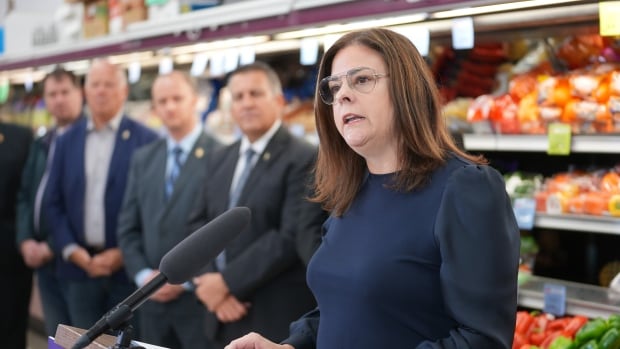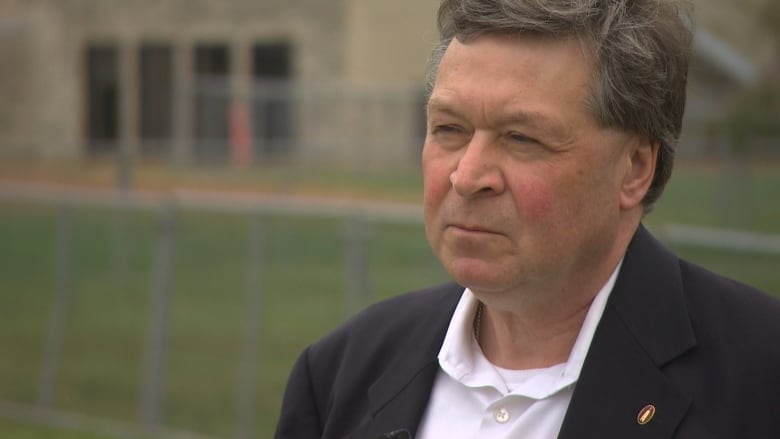
Nearly 15,000 of the cheques the Manitoba government wrote earlier this year to help with rising fuel and food costs never made it to their intended recipients.
The province reports 14,913 cheques that were billed as a “carbon tax relief fund” in January were returned to the sender. Mail can be returned for numerous reasons, including being sent to the wrong address or the individual moving away.
While the government says it’s responding to every eligible adult who says they didn’t receive their $225 or $375 cheque, the province’s inability to reach thousands of people with free money is renewing questions about using only the mail service to give out cheques.
Josh Brandon, a community animator with the Social Planning Council of Winnipeg, said the current approach leaves out people who need this money the most.
“We know that low-income families are disproportionately likely to have changed addresses over the past year. They’re more likely to not be following current events and not know about the details of the program,” Brandon said.
“It’s families who are struggling to pay rent, to buy groceries. Those are the households that we should be reaching with the affordability money.… It shows that we really need to rethink this program.”
The province issued 679,352 carbon tax relief cheques beginning in February. Of that total, 14,913 cheques have been returned and an additional 43,815 have yet to be cashed, which equals to almost nine per cent of the total cheques issued.
Thousands missing cheques
People who believe they’re eligible and haven’t received a cheque have been instructed to fill out a government form online. The province has so far reviewed 2,600 of the 4,000 applications received, and found in a majority of those cases the cheque was sent to an old address.
Still, thousands of additional people are still without the cheque they’re entitled to. Brandon suspects low-income people, especially homeless individuals, are included in that category.
“We see that phenomenon with the voting registry” and tax filing, he said.

Since they’re more likely to have unstable housing arrangements, “the government doesn’t always have the most up-to-date records of what their address is,” Brandon said.
The criteria for the carbon tax relief fund included having a family income in 2021 lower than $175,000.
The province began issuing cheques in the mail in 2021 when it introduced the annual education tax rebate and Manitoba Public Insurance started sending rebates to customers. Critics have suggested the province and the Crown corporation could use direct deposit in addition to mail, or simply lower the taxes or fees those customers pay in the first place.
The government has defended sending cheques in the mail as a safe and reliable way to deliver money, adding it doesn’t have access to people’s electronic banking information and obtaining that information would delay the payments.
Direct deposit dilemmas
The electronic approach hasn’t been embraced everywhere. The Canada Revenue Agency has been urging people for years to sign up for direct deposit for income tax returns, but it still sent out 2.6 million printed cheques last year.
Manitoba Finance Minister Cliff Cullen wasn’t available for an interview on Thursday.
When asked if the province would consider moving to a digital payment for future cheque payment, a government spokesperson opened the door slightly: “Manitoba may consider exploring different options in the future.”
Christopher Adams, adjunct professor in political studies at the University of Manitoba, said some voters’ perceptions of the Progressive Conservative government may improve when they’re holding a government cheque in their hand. That may have influenced the province’s mail-only approach, he said.
“I think the cheque is a physical presence of the government in your wallet,” he said.

A taxpayers’ advocate said the province is smart to return more money to Manitobans, but he said using the mail isn’t sufficient if tens of thousands of people still haven’t deposited their cash.
“The federal government for all its faults has figured out how to do direct deposit. I’m assuming the Manitoba government could do the same,” said Gage Haubrich, Prairie director of the Canadian Taxpayers Federation.
Sally Massey Wiebe works with Community Financial Counselling Services, an organization that helps low-income Manitobans file their taxes.
She said it’s inevitable some people will have complications getting their cheque, as the money is sent out based on criteria at a certain period of time. People’s life situations may change in the meantime, ranging from an address change to the ending of a relationship.
These financial systems are “difficult to navigate for many people. They’re complicated and often the rules around them are not understood,” she said.
Massey Wiebe also emphasized that more than 91 per cent of the cheques that were sent “did go to where they were intended to go.”
The government website for the Carbon Tax Relief Fund states applications for people who didn’t get their cheque will remain available until July 1, but a government spokesperson says inquiries will continue to be reviewed after that date and cheques will still be sent if necessary.